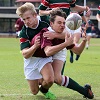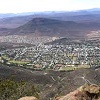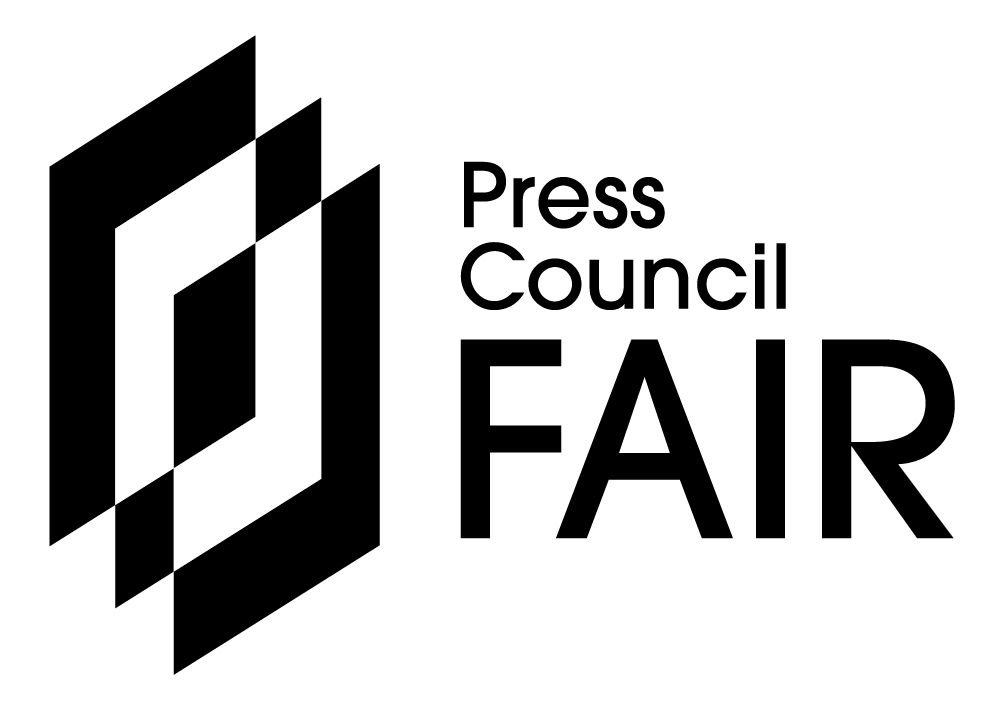NIEU-BETHESDA NEWS - It was 20 years ago that Jeni Couzyn came to the village of Nieu-Bethesda with a dream of what could be made possible working in a creative way with the stories of the Bushman people of the village.
The 'First People' artists in turn had an idea of their vision that they recognised in her.
The essence of these dreams - made reality through much hard work, due process, many challenges and essentially, love - was made evident in a beautiful celebration last Wednesday as the "Bushman Heritage Museum" was officially declared open at the Bethesda Art Centre.
"The Bethesda Arts Centre was founded in 1999 by Jeni Couzyn, a poet and psychoanalyst driven by a love for the people of the community, and a desire to help them reconnect with their cultural roots.
The artists are local people of mixed descent from the coloured community, who have gradually come to recognise and own their Bushman descent.
No-one is left alive who speaks the |Xam language, but we do know that the
|Xam covered a large area in the Northern and Eastern Cape, that included the Sneeuberg mountains, and Nieu- Bethesda."
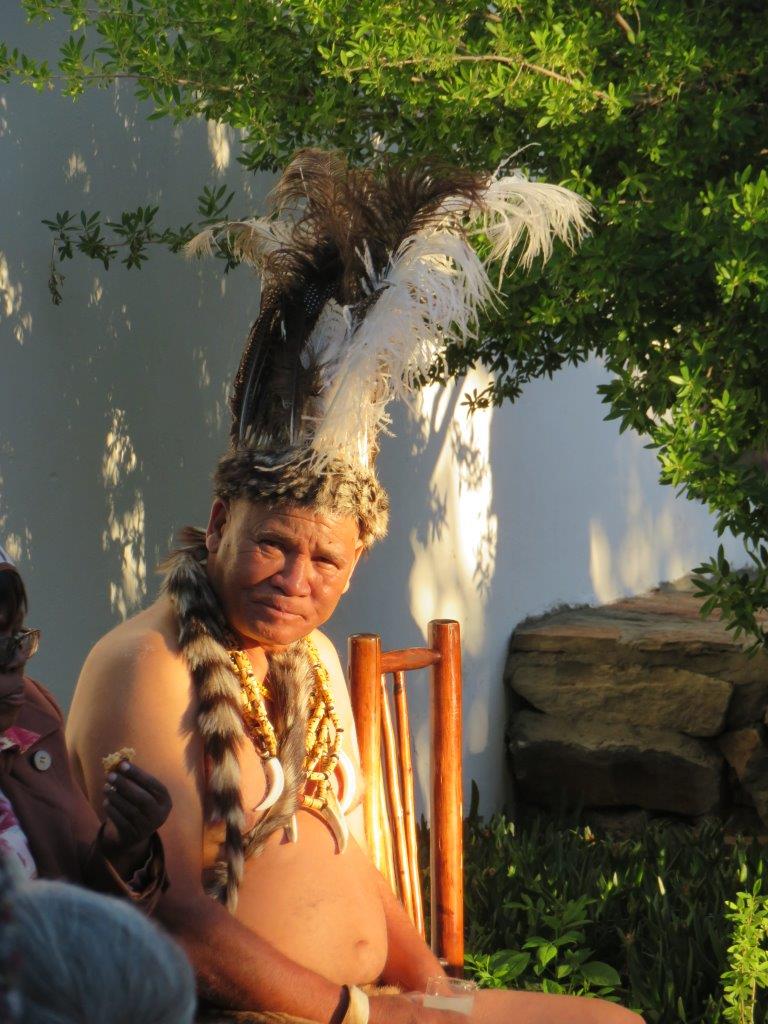 Eastern Cape Bushman Leader Toetie Douw.
Eastern Cape Bushman Leader Toetie Douw.
Led into the village by an African Hoopoe, Jeni and her daughter Tarot started giving drawing lessons to local people in 1999. When those who they taught realised that they could sell their creations, a new attitude towards art was born. This morphed into sewing, a well-loved craft in the village, and various quilts started to be created as a collaboration of stories, talent and teamwork.
"For the last twenty years Bushman descendants have been making giant tapestries and lino-prints exploring the creation mythology of the |Xam -stories recorded in the 19th Century, just before the |Xam language became extinct.
Now the Bethesda Arts Centre is to become the Bushman Heritage Museum, to make better known this ancient wisdom.
The giant tapestries made at the Centre have been honoured at an international level, including work being exhibited at the Iziko National Gallery, the Grahamstown Festival, various European cities, and in Australia. Tapestries have been purchased by corporations, public galleries, the Constitutional Court in Johannesburg, and by the British Museum."
A generous luncheon, which included singing, dancing and story-telling during the day, was followed by the more formal opening in the evening.
People from all over the world as well as the village gathered in the quirky Tower Courtyard where they were welcomed by Jeni Couzyn (founder) and Sandra Swiers (lead artist). Eastern Cape Bushman leader, Toetie Douw performed a poignant blessing upon the museum by burning traditional herbs.
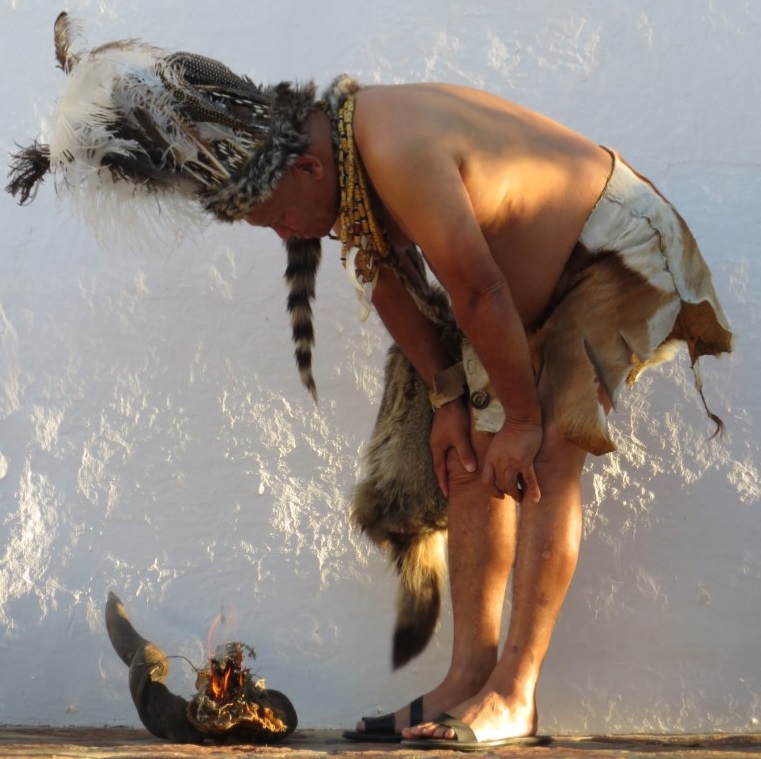
After delicious canapés were served by the cooks at the Tower Restaurant, everyone went inside to the museum.
On entry into this incredible place, one's breath is taken away by the sheer magnitude and scale of the oversized tapestries that have been created to depict the myths and legends of the past. Bold colour, detailed texture, meticulous attention to detail, and sheer talent radiate from the pieces which deserve their places in the British Museum and the Constitutional hall, where they hang.
In her speech, chairperson of the board, Valerie Sinason said, "All our ancestors have brought us together today, in the presence of greatness. A greatness that could have been lost had it not been brought out of the darkness with the help of experts such as Lucy Lloyd, Professor Pippa Skotness and Jeni Couzyn - a most remarkable dreamer." She spoke of how, despite our dark history, the words and creation of the Bushman people have come back again.
Professor Pippa Skotness enlightened the audience in her fascinating discussion on frames of reference and the fact that in story-telling there is not only one truth.
IXaba would have looked at a story differently - from the world which HE came. There were, for instance, no terms for colour in the Bushman culture - references would have been made to the particular 'colour' of a seedpod at a specific time of year.
Their world was also not one where things or people were reduced to numbers - the reduction to one 'thing' was considered an insult.
Professor Skotness also explained how Bushman stories were not linear - the stories depicted on the tapestries speak to all of us, they are not locked in time, this history belongs in the present.
She expressed a deep admiration that, despite the insults hurled at the Bushman people, that these beautiful, intricate stories exist and will be continued to be made available for future generations.
It is extremely meaningful to Professor Skotness that sharing her access to the archives as an academic has led to this meaningful project.
Lead artist, Sandra Swiers expressed how those involved with the Art Centre did not know much about their own history until Jeni started working with them.
"When Jeni worked with us on the stories, we recognized that this is what we are. We sing, we dance, tell stories and make fires. These ARE our stories. IXaba is our ancestor. Through acknowledgement of who we are, we have become better people. There is so much love here that it is sometimes overwhelming."
In closing, Jeni Couzyn said that Nieu-Bethesda is often thought of as a "Power Point". "Here the dark is very dark, and the light is very light.
Everything is amplified. When things go right it blazes with light and beauty. Nieu-Bethesda is an intense yet rewarding place to work."
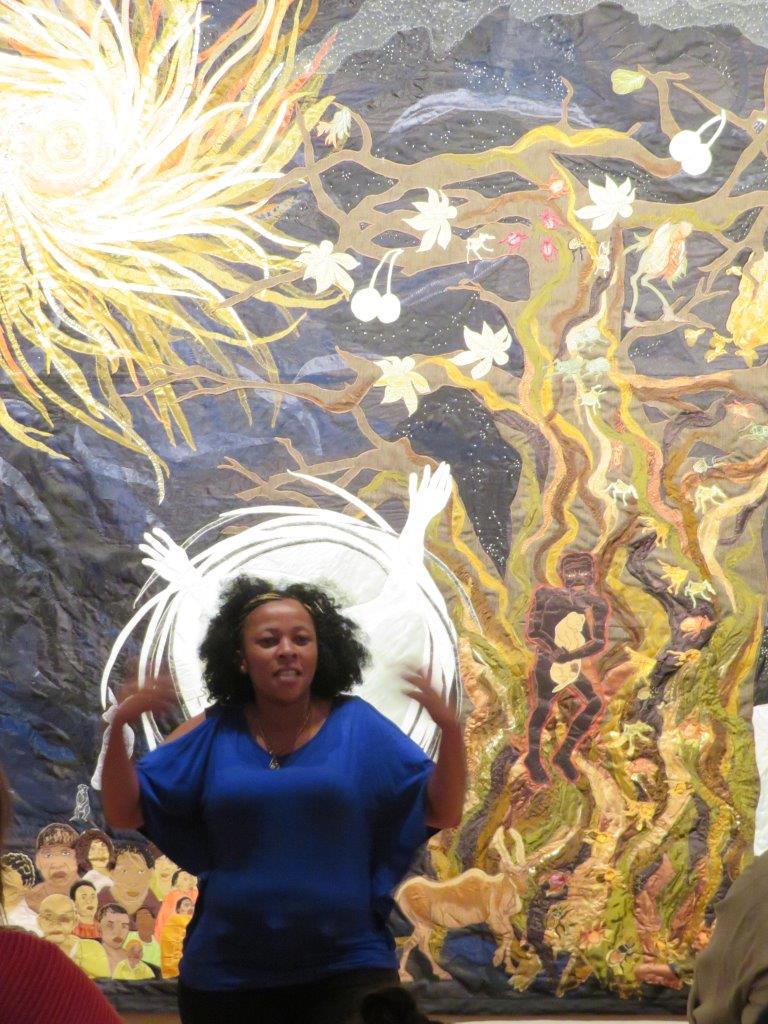 Leading Artist Sandra Swiers in front of one of the Tapestries.
Leading Artist Sandra Swiers in front of one of the Tapestries.
Audrey Lorde - "When we speak we are afraid our words will not be heard or welcomed. But when we are silent, we are still afraid. So it is better to speak." The Bushman Heritage Museum is making the voices of this incredible history available for all to hear.
"We bring you the latest Nieu-Bethesda, Karoo news."





